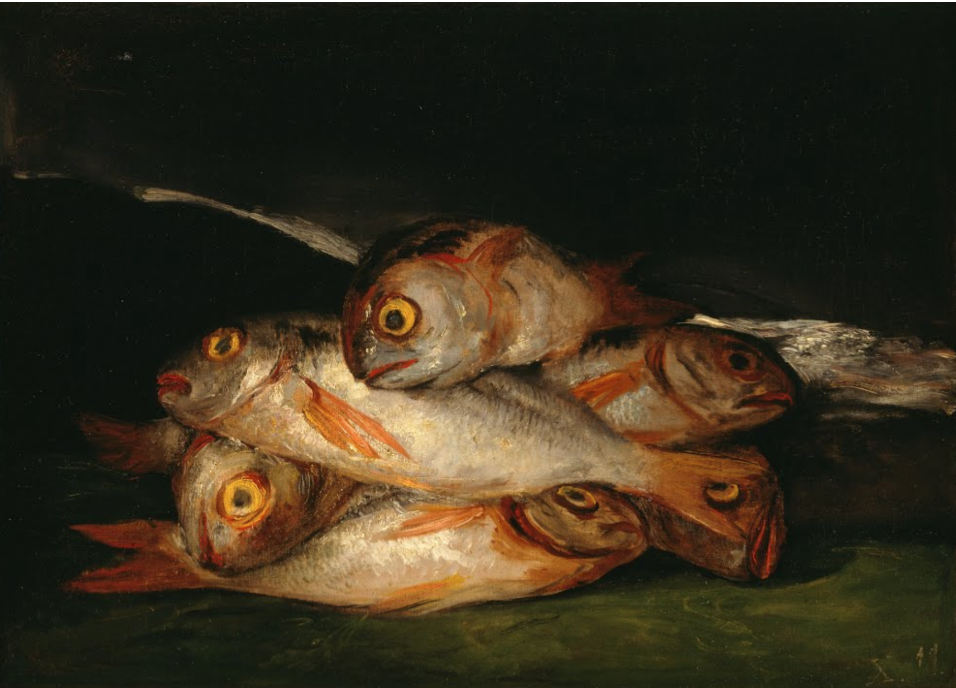Look closely at the image of the painting Still Life with Golden Bream by Francisco Goya.
The following activities and questions are designed to help your students use their noticing skills to move through the poem and develop their thinking skills so they understand its meaning with confidence, using what they’ve noticed as evidence for their interpretations. Read more about the framework upon which these activities are based.
-
Warm-up: Look closely at the image of the painting Still Life with Golden Bream by Francisco Goya. What stands out to you in this image? Why? Rotate to other positions in the room where you can still see the painting. Look even more closely. What else can you see? What questions do you have?
-
Before Reading the Poem: Read the definition of the word dorado. Then, try writing a line that incorporates this definition in some way. Share your line with the class.
-
Reading the Poem: Silently read the poem “A Pile of Fish” by Tomás Q. Morín. What do you notice about the poem? Note any words or phrases that stand out to you or any questions you might have.
-
Listening to the Poem: Enlist two volunteers and listen as the poem is read aloud twice. Write down any additional words and phrases that stand out to you. You might enjoy listening to the poet read the work aloud.
-
Small Group Discussion: Share what you noticed about the poem with a small group. What connections can you make between the poem and the resources from the beginning of class? Read this definition of ekphrasis: “Ekphrasis is the use of vivid language to describe or respond to a work of visual art.” How does the painting inform the poem?
-
Whole Class Discussion: Read this description about the history of ekphrasis: “Ekphrastic writing became important in the second half of the eighteenth century when a public demand for descriptions of art arose. There were no accurate reproductions of works of visual art to distribute to the public, so the art had to be shared through language. The goal for these ekphrastic writers was to impart a visual experience on their readers.” In your mind, what is the connection between art and poetry? Why? Do you see any other connections between poetry and other art forms?
-
Extension for Grades 7-8: The poem recalls about the painting, “No matter where we stand, / there’s always one fish staring at us.” Write a poem from the point of view of one of these fish. How did it arrive here? What does it think and feel? Why? Share your writing with your class.
-
Extension for Grades 9-12: In honor of Hispanic Heritage Month, read more poets. Can you find poets who are new to you? Choose one or two poems and print them out, or ask your teacher for assistance. Bring these poems to class and participate in a class poem swap in which you will discuss and exchange poems and ideas. Join with a partner. Read your poems and share why you liked them. Swap one poem with your partner and continue the process two more times. At the end, share with your class how this felt. What ideas did you learn? What was the most interesting line from a poem or idea that you heard today? Why?
“I would say that poetry is the place we go to when we don’t have any more words; that place that is so emotionally centered. It is the place we go to when we have something that we can’t quite put a finger on, that we can’t explain away, that we can’t easily understand with the mind.” Read more from “Our People, Our Future: Richard Blanco in Conversation.”
Ekphrasis is the use of vivid language to describe or respond to a work of visual art.

